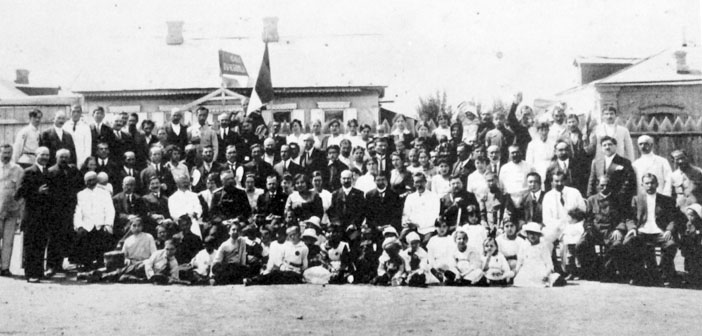Ermeni Soykırımı’ndan sağ kurtulanlar için bir sığınak: Çin


Harput’tan (Kharpert) Rahip Asadoor Z. Yeghoyan, Boston’a 1914 yılında varmış olan kardeşi Krikor’a1 yazdığı mektubunda, “Krikor, tüm dünyayı dolaştın, dünyanın yuvarlak olduğunu yaşayarak öğrendin, dikkat et de üzerinden düşme”2 diyordu. Rahibin sözleri doğru değildi ama bir tür kehanetti. O sıralarda Krikor tüm dünyayı dolaşmamıştı, Osmanlı İmparatorluğu’nu terk ederek Atlantik Okyanusu’nu geçmiş ve ABD’ye varmıştı. Fakat Krikor kısa bir süre sonra memleketine dönecek ve 1. Dünya Savaşı’nın girdabına kapılacaktı. Dersimli Kürtlerin yardımları sayesinde Ermeni Soykırımı’ndan sağ kurtuldu ve sonuçta Kafkasya’ya ulaştı. Ama bu sefer Kafkasya’daki çatışma onu daha da doğuya sürükledi, ta ki Çin’e ulaşıncaya dek. 1919 yılında, Birinci Ermeni Cumhuriyeti’nin Fahri Japonya Konsolosu Diana Apkar’ın yardımıyla Japonya üzerinden nihayet ABD’ye vardı. Ondan sonra, gerçekten de tüm dünyayı dolaştı. Bu makalede, Krikor gibi soykırımdan kaçan ve Çin’i sığınılacak bir liman olarak gören binlerce Ermeni’nin kısa tarihçesini anlatacağım.
1880’lerden 1950’lere
Özellikle Rusya’da yaşayanlar olmak üzere yüzlerce Ermeni, 19. yüzyılın sonlarında yeni fırsat arayışlarıyla Çin’e seyahat ettiler ve büyük şehirlere demir attılar. Bu şehirlerden biri de, Doğu Çin Demiryolu inşaatı sayesinde ön plana çıkmaya başlayan Harbin’di.


